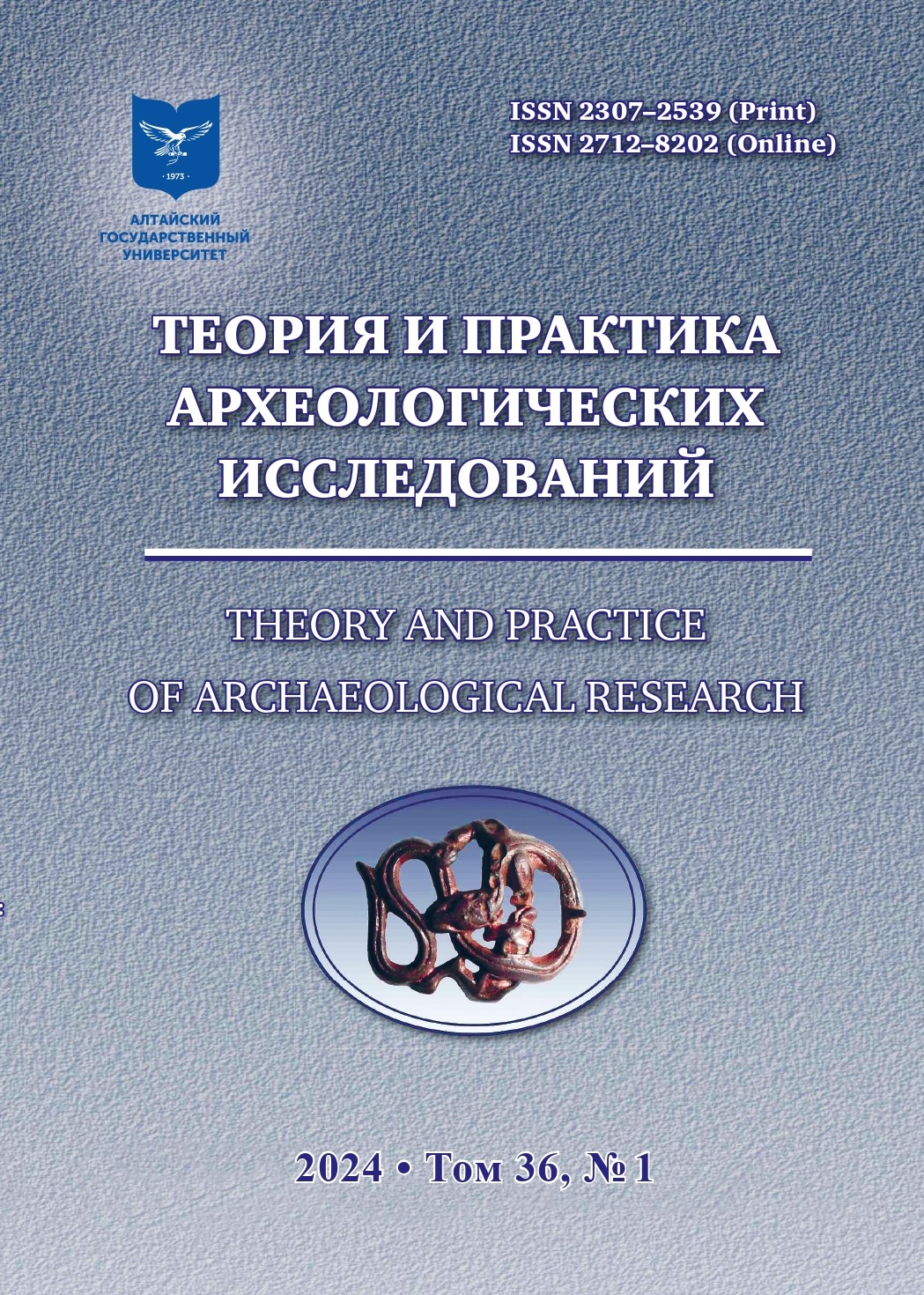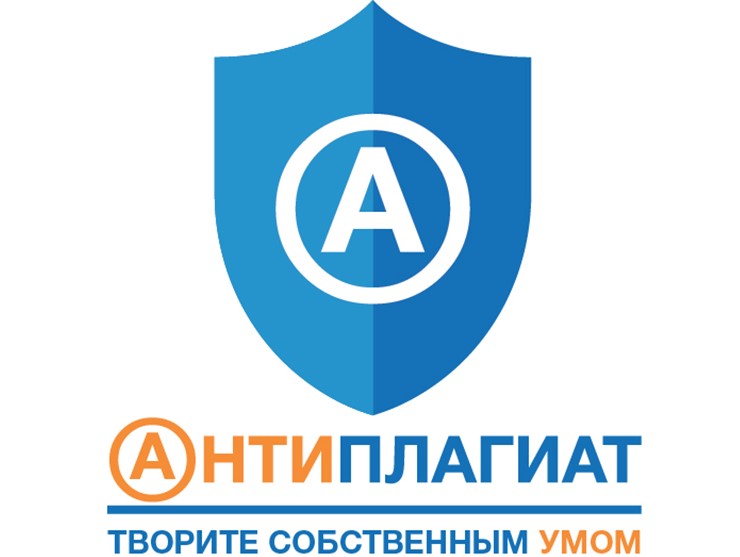ДЕТСКАЯ СМЕРТНОСТЬ У НАСЕЛЕНИЯ АНДРОНОВСКОЙ КУЛЬТУРЫ ЛЕСОСТЕПНОГО АЛТАЯ
Аннотация
Детская смертность является важным индикатором экономического и социального благополучия общества, тесно коррелирует с уровнем рождаемости и скоростью прироста населения. Цель данной работы — установить общий уровень и возрастную динамику детской смертности у населения андроновской (федоровской) культуры Лесостепного Алтая на основе изучения скелетных материалов из могильников Рублево-VIII, Фирсово-XIV и Чекановский Лог-2,10. Суммарная детская выборка включала 321 индивида (0–14 лет). Доля индивидов, не доживших до взрослого возраста, составляла 66%. Максимальный уровень детской смертности отмечен в возрасте до 1 года, после чего она постепенно снижалась. Высокая пропорция новорожденных, включая недоношенных, которых хоронили на одном кладбище со взрослыми, в индивидуальных могилах и в сопровождении инвентаря, свидетельствует о том, что в андроновском обществе дети считались членами социума с момента появления на свет. В соотношениине онатальной (от рождения до 1 месяца) и постнеонатальной (от 1 до 12 месяцев) смертности,которые определяются разными факторами, выявляются локально-территориальные различия. Рублево-VIII и Чекановском Логе-2, 10 неонатальная смертность превышала постнеонатальную, в Фирсово-XIV — обратное соотношение этих показателей. Вместе с тем анализ полевой документации показывает, что не все дети, погребения которых были раскопаны в перечисленных могильниках, вошли в состав исследованных выборок из-за плохой сохранности костныхостанков. С учетом последних доля индивидов, умерших в детском возрасте, могла достигать70%. Высокая детская смертность свидетельствует о высоком уровне рождаемости у населения андроновской культуры. Причины высокой смертности в неонатальный и постнеонатальный периоды остаются неясными и требуют дальнейшего изучения.
Скачивания
Литература
Alekseev V. P. Paleodemography of the USSR. Sovetskaya Arheologiya = Soviet Archeology. 1972;1:3–20. (In Russ.)
Alekseeva T.I., Bogatenkov D.V., Lebedinskaya G.V. Vlachs. Anthropo-Ecological Research (Based on Materials from the Medieval Necropolis of Mistikhali). Moscow : Nauchnyj Mir, 2003. 132 p. (In Russ.)
Bobrov V. V., Mikhailov Yu. I. Demographic Aspect of the Study of Andronovo Society in the Eastern Regions of the Cultural area (according to children’s burials) // Ecology of Ancient and Modern Societies. Tyumen : Izd-vo IPOS SO RAN, 1999. Pp. 94–97. (In Russ.)
Demin M. A., Sitnikov S. M. Materials of the Gilev Archaeological Expedition. Part 1. Barnaul: Izd-vo BGPU, 2007. 274 p. (In Russ.)
Kiryushin Yu. F., Grushin S. P., Orlova L. A., Papin D. V. Chronology of Altai in the Bronze Age (Problems of Radiocarbon Dating) // Problems of Archaeology, Ethnography, Anthropology of Siberia and the Adjacent Territories. Vol. XIII. Novosibirsk : Izd-vo IAE SO RAN, 2007. Pp. 255–259. (In Russ.)
Kiryushin Yu. F., Papin D. V. Some Questions of Radiocarbon Chronology of Andronovo Culture Monuments in Altai // Archaeological Investiagations in Western Siberia: Past, Present, Future (to the Anniversary of Prof. T.N. Troitskaya). Novosibirsk : NGPU, 2010. Pp. 19– 21. (In Russ.)
Kiryushin Yu. F., Papin D.V., Pozdnyakova O.A., Shamshin A.B. Funeral Rite of the Ancient Population of the Kulunda Steppe in the Bronze Age. In: Arid Zone of the South of Western Siberia in the Bronze Age. Barnaul : Izd-vo Alt. un-ta, 2004. Pp. 62–85. (In Russ.)
Kiryushin Yu. F., Papin D. V., Tur S. S., Pilipenko A. S., Fedoruk A.S., Fedoruk O. A., Frolov Ya.V. Funeral Rite of the Ancient Population of the Barnaul Ob Region (Materials from the 2010–2011 Excavations of the Firsovo-XIV Burial Ground). Barnaul : Izd-vo Alt. un-ta., 2015. 208 p. (In Russ.)
Kiryushin Yu. F., Papin D. V., Fedoruk A. S. The Study of Bronze Age Monuments of the Kulunda Steppe in the Summer of 2009. In: Problems of Archaeology, Ethnography and Anthropology of Siberia and the Adjacent Territories. T. XIV. Novosibirsk : Izd-vo IAE SO RAN, 2009. Pp. 275–280. (In Russ.)
Kiryushin Yu. F., Papin D. V., Fedoruk O. A. Andronovo Culture in Altai (Based on Materials from Burial Complexes). Barnaul : Izd-vo Alt. un-ta, 2015. 108 p. (In Russ.)
Kupriyanova E. V. On the Issue of the Causes of Children’s Collective Burials in the Bronze Age Necropolises of the Southern Trans-Urals // Ethnic Interactions in the Southern Urals. Chelyabinsk : Rifej, 2004. Pp. 82–84. (In Russ.)
Kufterin V. V., Vorobyova S. L. On the Paleodemography of the Pyany Bor Culture. Povolzhskaya Arheologiya = The Volga River Region Archaeology. 2019;27(1):164–179. (In Russ.)
Malinovsky A., Mlodzeevsky B. Development of the Upper Limb Long Bones in Human Fetuses. In: Questions of Anthropology. Issue 62. Moscow : Izd-vo MGU, 1979. Pp. 104–115. (In Russ.)
Matveev A. V., Anoshko O. M. On the Issue of Paleodemography of the Alakul Culture in Trans-Urals. In: Ecology of Ancient and Modern Societies. Abstract. Tyumen : Izd-vo IPOS SO RAN, 1999. Pp. 163–165. (In Russ.)
Mednikova M. B. Paleodemographic Analysis of Anthropological Materials from Burial Complexes of the Dzhetyasar Culture. In: Archaeology, Paleoecology and Paleodemography of Eurasia. Moscow : Geos, 2000. Pp. 70–78. (In Russ.)
Molodin V. I., Chikisheva T. A. Kurgan Burial Ground Preobrazhenka-3 — a Monument of Bronze Age Cultures of the Barabinsk Forest-Steppe. In: Paleoanthropology and Archeology of Western and Southern Siberia. Novosibirsk : Nauka, 1988. Pp. 125–206. (In Russ.)
Papin D. V. Research in Altai Kulunda. In: Archaeological Discoveries of 1999. Moscow : In-t Arheologii RAN, 2001. Pp. 246–247. (In Russ.)
Papin D. V. Problems of Radiocarbon Chronology of the Andronovo Culture of Altai. In: Radiocarbon in Archaaeology and Paleoecology: Past, Present, Future. St. Petersburg : Izd-vo IIMK RAN, 2020. Pp. 63–64. (In Russ.)
Razhev D.I. Bioanthropology of Sargat Populations. Ekaterinburg : UrO RAN, 2009. 492 p. (In Russ.)
Razhev D.I., Epimakhov A.V. Bronze Age Necropolises: The Phenomenon of NumerousChildren’s Burials. In: Ecology of Ancient and Modern Societies. Issue 2. Tyumen : Izd-vo IPOS SO RAN, 2003. Pp. 244–247. (In Russ.)
Razhev D.I., Epimakhov A.V. The Phenomenon of the Large Number of Children’s Burials in the Burial Grounds of the Bronze Age. Vestnik arheologii, antropologii i etnografii = Bulletin of Archaeology, Anthropology and Ethnography. 2005;5:107. (In Russ.)
Savko I.A. Features of the Planigraphy of Children’s Burials (Based on Materials from the Andronovo Burial Ground Chekanovsky Log-10). In: Ancient and Traditional Cultures of Siberia and the Far East: Problems, Hypotheses, Facts. Omsk : Izdatel’-Poligrafist, 2018. Pp. 103–105. (In Russ.)
Tur S.S., Matrenin S.S., Soenov V.I. Armed Violence among the Altai Mountains Pastoralists of the Hunno-Sarmatian Paeriod. Arheologiya, etnografiya i antropologiya Evrazii = Archaeology, Ethnography and Anthropology of Eurasia. 2018;46(4):132–139. (In Russ.)
Fedoruk A.S., Papin D.V., Savko I.A., Fedoruk O.A. Excavations of the Firsovo-14 Burial Ground in 2020. In: Archaeological Discoveries. 2020. Moscow : Institut arheologii RAN, 2022. Pp. 392–394. (In Russ.)
Fedoruk O.A. Funeral Rite of the Andronovo Culture of the Steppe and Forest-Steppe Altai: Analysis of Gender and Age Differences. Izvestiya Altajskogo gosudarstvennogo universiteta = News of the Altai State University. 2015;3/2(1):256–261. (In Russ.)
Shamshin A.B. Complexes of the Developed and Late Bronze Necropolis of Firsovo-XIV (Barnaul Ob Region). In: Kadyrbaev Readings. Aktobe, 2007. Pp. 78–81. (In Russ.)
Shirobokov I.G. Age Distribution of the Deads in the 17th–19th centuries Russia: Deceptive Paleodemography. Sibirskie istoricheskie issledovaniya = Siberian Historical Research. 2019;4:180–196. (In Russ.)
AlQahtani S.J., Hector M.P., Liversidge H.M. Brief Communication: The London Atlas of Human Tooth Development and Eruption. American Journal of Physical Anthropology. 2010:142(3):481–490.
Acsádi G., Nemeskéri J. History of Human Life Span and Mortality. Budapest : Akadémiai Kiadó, 1970. 346 p.
Bello S.M., Thomann A., Signoli M., Dutour O., Andrews P. Age and Sex Bias in the Reconstruction of Past Population Structures. American Journal of Physical Anthropology. 2006;129:24–38.
Bentley G.R., Goldberg T., Jasienska G.Z.Y. The Fertility of Agricultural and Non-agricultural Traditional Societies. Population Studies. 1993;47:269–281.
Berseneva N. Bronze Age Child Burials in the Southern Trans-Urals (21st–15th Centuries cal. BC). In: Children, Death and Burial: Archaeological Discourses / edited by E. Murphy, M. Le Roy. Oxford : Oxbow Books, 2017. Pp. 125–146.
Bourgeois-Pichat J. La Mesure de la Mortalité Infantile. I. Principes et Méthodes. Population. 1951;6:233–248.
Brewis A. Anthropological Perspectives on Infanticide. Arizona Anthropologist. 1992;8:103–119.
Cardoso H.F.V., Meyers J., Liversidge H.M. A Reappraisal of Developing Deciduous Tooth Length as an Estimate of Age in Human Immature Skeletal Remains. Journal of Forensic Sciences. 2019;64(2):385–392.
Cardoso H.F.V., Spake L., Liversidge H.M. A Reappraisal of Developing Permanent Tooth Length as an Estimate of Age in Human Immature Skeletal Remains. Journal of Forensic Sciences. 2016;61(5):1180–1189.
Carroll M. Infant Death and Burial in Roman Italy. Journal of Roman Archaeology.2011;24:99–120.
Cveček S., Schwall C. Ghost Children: Delayed Personhood and Culture-Specific Models of Infancy in Western Anatolia. Praehistorische Zeitschrift. 2022;97(2):544–570.
Daly M., Wilson M. A Sociobiological Analysis of Human Infanticide. In: Infanticide: Comparative and Evolutionary Perspectives / edited by G. Hausfater, S.B. Hrdy. New York : Aldine, 1984. Pp. 487–502.
Djurić M., Djukić K., Milovanović P., Janović A., Milenković P. Representing Children in Excavated Cemeteries: the Intrinsic Preservation Factors. Antiquity. 2011;85:250–262.
Ērkšķe A. The Children are Missing! Some Thoughts on the Underrepresentation of the Non-adult Burials in Latvian Iron Age Cemeteries. Estonian Journal of Archaeology. 2020;24(2):161–189.
Guy H., Masset C., Baud C. A. Infant Taphonomy. International Journal of Osteoarchaeology. 1997;7:221–229.
Houby-Nielsen S. Child Burials in Ancient Athens. In: Children and Material Culture / edited by J.S. Derevenski. London : Routledge, 2000. Pp. 151–166.
Knodel J. E. Infant and Child Mortality: Levels, Trends and Seasonality. In: Demographic Behavior in the Past: A Study of Fourteen German Village Populations in the Eighteenth and Nineteenth Centuries. Cambridge Studies in Population, Economy and Society in Past Time. Cambridge : Cambridge University Press, 1988. Pp. 35–69.
Kostanti K. ‘Missing infants’: Giving Life to Aspects of Childhood in Mycenaean Greece via Intramural Burials. In: Children, Death and Burial: Archaeological Discourses / edited by E. Murphy, M. Le Roy. Oxford : Oxbow Books, 2017. Pp. 107–124.
Lalou R. Endogenous Mortality in New France: At the Crossroads of Natural and Social Selection. In: Infant and Child Mortality in the Past / edited by A. Bideau, B. Desjardin, H. P. Brignoli. Oxford : University Press, 1997. Pp. 203–215.
Lancy D. F. “Babies aren’t Persons”: a Survey of Delayed Personhood. In: Different Faces of Attachment: Cultural Variations on a Universal Human Need / edited by H. Otto, H. Keller. Cambridge : University Press, 2014. Pp. 66–112.
Levinson D. Family Violence in Cross-Cultural Perspective. In: Handbook of Family Violence / edited by V.B. Van Hasselt, R.L. Morrison. A.S. Bellack, M. Hersen, New York : Springer, 1989. Pp. 435–455.
Lewis M. E. Bioarchaeology of Children. Perspectives from Biological and Forensic Anthropology. Cambridge : Cambridge University Press, 2007. 255 p.
Liston M. A., Rotroff S.I. Babies in the Well: Archaeological Evidence for Newborn Disposal in Hellenistic Greece. In: The Oxford Handbook of Childhood and Education in the Classical World / edited by J.E. Grubbs, T. Parkin. Oxford : University Press, 2013. Pp. 62–82.
Lucy S. The Archaeology of Age. In: The Archaeology of Identity: Approaches to Gender, Age, Status, Ethnicity and Religion / edited by M. Díaz-Andreu, S. Lucy, S. Babić, D.N. Edwards. New York : Routledge, 2005. Pp. 43–66.
McFadden C., Oxenham M. F. The D0-14/D ratio: A New Paleodemographic Index and Equation for Estimating Total Fertility Rate. American Journal of Physical Anthropology.2018;165(3):471–479.
McGeorge F. J. P. Intramural Infant Burials in the Aegean Bronze Age: Reflections on Symbolism and Eschatology with Particular Reference to Crete. In: Le Mort Dans la Ville: Pratiques, Contextes et Impacts des Inhumations Intra-muros en Anatolie, du Début de l’Age du Bronze à l’époque Romaine / edited by O. Henry. Istanbul : Institut Français d’Études Anatoliennes, 2013. Pp. 1–19.
Meskell L. Cycles of Life and Death: Narrative Homology and Archaeological Realities. World Archaeology. 2000;31:423–441.
Meskell L. M. Dying Young: the Experience of Death at Deir el Medina. Archaeological Review from Cambridge. 1994;13(2):35–45.
Preston S. H., Himes C., Eggers M. Demographic Conditions Responsible for Population Aging. Demography. 1989;26(4):691–704.
Schaefer M., Black S., Scheuer L. Juvenile Osteology: A Laboratory and Field Manual. Elsevier Inc., 2009. 369 p.
Stojanowski C. M., Seidemann R. M., Doran G. H. Differential Skeletal Preservation at Windover Pond: Causes and Consequences. American Journal of Physical Anthropology. 2002;119(1):15–26.
Scott S., Duncan C. Malnutrition, Pregnancy and Infant Mortality: a Biometric Model. Journal of Interdisciplinary History. 1999;30:37–60.
Tur S.S., Svyatko S. V., Nechvaloda A.I. Cleft Lip Case in a Middle Bronze Age Young Man from Altai, Russia. International Journal of Osteoarchaeology. 2017;27(2):276–287.
Ucko P. J. Ethnography and the Archaeological Interpretation of Funerary Remains. World Archaeology. 1969;1:262–280.
Volk A. A., Atkinson J. A. Infant and Child Death in the Human Environment of Evolutionary Adaptation. Evolution and Human Behavior. 2013;34(2):182–192.
Wiley A. S., Pike I. L. An Alternative Method for Assessing Early Mortality in Contemporary Populations. American Journal of Physical Anthropology. 1998;107:315–330.
Williamson L. Infanticide: an Anthropological Analysis. In: Infanticide and the Value of Life / edited by M. Kohl. Buffalo; New York : Prometheus Books, 1978. Pp. 61–75.
Copyright (c) 2024 С.С. Тур, О.А. Федорук, И.А. Савко

Это произведение доступно по лицензии Creative Commons «Attribution» («Атрибуция») 4.0 Всемирная.
Авторы, публикующиеся в данном журнале, соглашаются со следующими условиями:
a. Авторы сохраняют за собой права на авторство своей работы и предоставляют журналу право первой публикации этой работы с правом после публикации распространять работу на условиях лицензии Creative Commons Attribution License, которая позволяет другим лицам свободно распространять опубликованную работу с обязательной ссылокой на авторов оригинальной работы и оригинальную публикацию в этом журнале.
b. Авторы сохраняют право заключать отдельные договора на неэксклюзивное распространение работы в том виде, в котором она была опубликована этим журналом (например, размещать работу в электронном архиве учреждения или публиковать в составе монографии), с условием сохраниения ссылки на оригинальную публикацию в этом журнале. с. Политика журнала разрешает и поощряет размещение авторами в сети Интернет (например в институтском хранилище или на персональном сайте) рукописи работы как до ее подачи в редакцию, так и во время ее редакционной обработки, так как это способствует продуктивной научной дискуссии и положительно сказывается на оперативности и динамике цитирования статьи







2.jpg)






